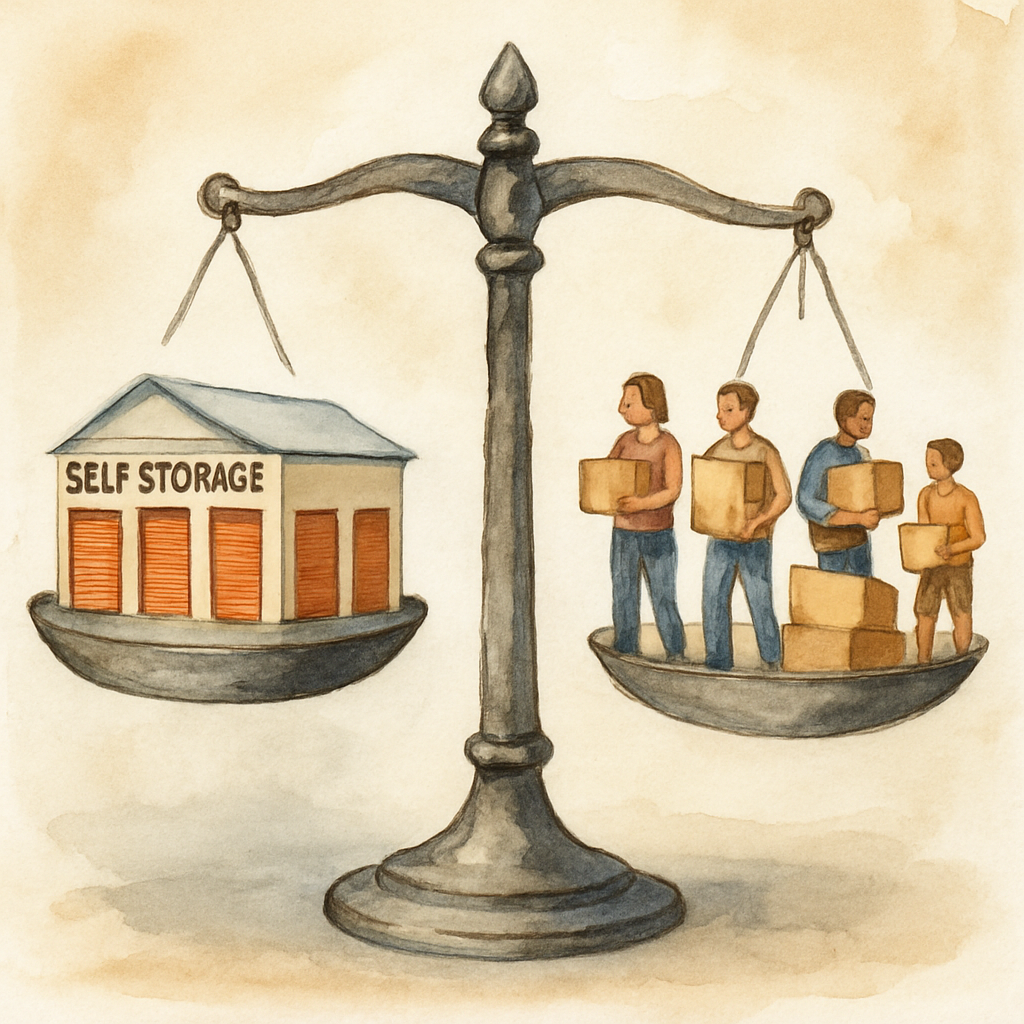
Facility Automation
Automated Self-Storage: An Operator’s Journey Through 5 Levels Of Automation
Automated self-storage operations can offer the following benefits to facility operators:
- Increased operational efficiency
- Reduced labor costs with few on-site personnel
- Consistent quality of service for tenants
- Streamlined tenant experiences
- Improved facility safety and security
When it comes to the autonomous cars market, the concept of the “five levels of automation” has been widely talked about.
At swivl, we’ve had a myriad of conversations with operators about their expectations regarding Unmanned stores — the concept evolving and becoming more refined over time.
With major institutional money coming in the objective to streamline day-to-day operations is more prevalent.
In self-storage, we’ll continue to see technology widen the gap between self-storage operators who are trying to stand out in a crowded market.
Understanding the five levels of industrial automation can enable self-storage facility operators to begin thinking about their approach to embracing automation.
Why listen to me? I have worked in the conversational AI space for close to a decade, with our previous AI company getting acquired. My day to day consists of speaking to operators of all sizes to understand their automation needs and wants, and see how to best help them get there. I currently am in charge of swivl's go to market strategy and am a co-host of the Self Storage Lab podcast.
Here are the five levels of automation:
- No Automation: All manual.
- Basic Automation: Machines do simple tasks.
- Assisted Automation: Human-machine collaboration.
- Conditional Automation: Machines do specific tasks.
- High Automation: Machines do most tasks.
- Full Automation: Machines do all tasks.
Let’s take a look at each of these levels and how they apply to self-storage facility operators.
Table Of Contents
- Automated Self-Storage: The 5 Levels Of Automation
- Level 0: No Automation - The Starting Point For All Operators
- Level 1: Basic Automation - Accelerating Basic Facility Tasks
- Level 2: Assisted/Partial Automation - Human-Machine Collaboration
- Level 3: Conditional Automation - A Balanced Act
- Level 4: High Automation - Minimized Human Intervention
- Level 5: Full Automation - The Future Of Self-Storage Facility Management
- Automated Self-Storage: Where Do We Go From Here?
Automated Self-Storage: The 5 Levels Of Automation
Level 0: No Automation - The Starting Point For All Operators
The first stage of the automation journey involves no automation.
From reservations to payments and security monitoring, operators manually handle all tasks, akin to the early days of self-storage. Despite the potential for limited efficiency and higher error probability, this stage does allow operators to leverage their experience and intuition, creating the flexibility to adapt to changes in the process.
- Advantages: Full human control, adaptable to changes.
- Disadvantages: Limited efficiency, higher error potential.
Level 1: Basic Automation - Accelerating Basic Facility Tasks
As we ascend the automation ladder, the first level introduces basic automation into your facility operations. This stage involves simple, repetitive tasks performed by machines or robots. For instance, access control systems can automate the process of ensuring tenants have access to their units and eliminate the need for personnel on-site at all hours.
- Advantages: Increased efficiency, reduced labor costs.
- Disadvantages: High initial investment, limited creativity.
Level 2: Assisted/Partial Automation - Human-Machine Collaboration
At the second level, we see the inception of human-machine collaboration. Self-storage facilities employ advanced automation systems, such as smart locks and security alarms, to assist operators in access control and security monitoring. Although human oversight is required, this level increases safety and efficiency, while also paving the way for handling complex tasks.
- Advantages: Increased safety and efficiency, reduced labor costs.
- Disadvantages: Human oversight required, limited adaptability.
Want to learn more? Listen to the Self Storage Lab
Episode 10: The Five Levels of Automation
Level 3: Conditional Automation - A Balanced Act
Conditional automation allows machines to perform certain tasks while humans undertake others. In the context of self-storage, this level sees the introduction of automated systems like chatbots and virtual assistants. These tools handle a majority of customer service tasks, while operators address complex issues, increasing efficiency and potentially reducing labor costs.
- Advantages: Increased efficiency, reduced labor costs.
- Disadvantages: Needs work process reorganization, limited adaptability.
Level 4: High Automation - Minimized Human Intervention
The penultimate stage in the automation journey, high automation, reduces the necessity for human intervention to a minimum. In self-storage, this can represent fully automated storage facilities that do not require any on-site personnel to support tenant experiences.
Despite potential limitations in handling complex situations and offering personalization, the advantages of improved efficiency are clear.
- Advantages: Improved efficiency, reduced labor costs.
- Disadvantages: Limited handling of complex situations, less personalized service.
Level 5: Full Automation - The Future Of Self-Storage Facility Management
The apex of the automation hierarchy, full automation, is a stage where machines perform all tasks without human intervention. Though still largely theoretical for self-storage, envisioning a future with fully automated facilities handling everything from reservations to payments and security monitoring is exhilarating. Fortunately, there’s no shortage of tools emerging.
- Advantages: Maximized efficiency, consistent quality.
- Disadvantages: Limited adaptability, potential job loss.
The industry's progression towards this level could be catalyzed by innovations like GPT-4.
Automated Self-Storage: Where Do We Go From Here?
As we continue to navigate the technological wave, it's clear that the gap between self-storage operators will be defined by their level of automation. With an increasing amount of rental activity generated online, unmanned facilities are poised to become more common.
The future of self-storage is automated, and the journey through these levels of automation presents a path to an exciting future with enhanced tenant experiences and greater customer satisfaction.
If you are curious about building an unmanned self-storage facility, we recommend taking a look through our Operator’s BluePrint to “Building an Unmanned Facility” — the all-in-one resource of all the tools accessible to an operator to run their self-storage business more effectively.
















